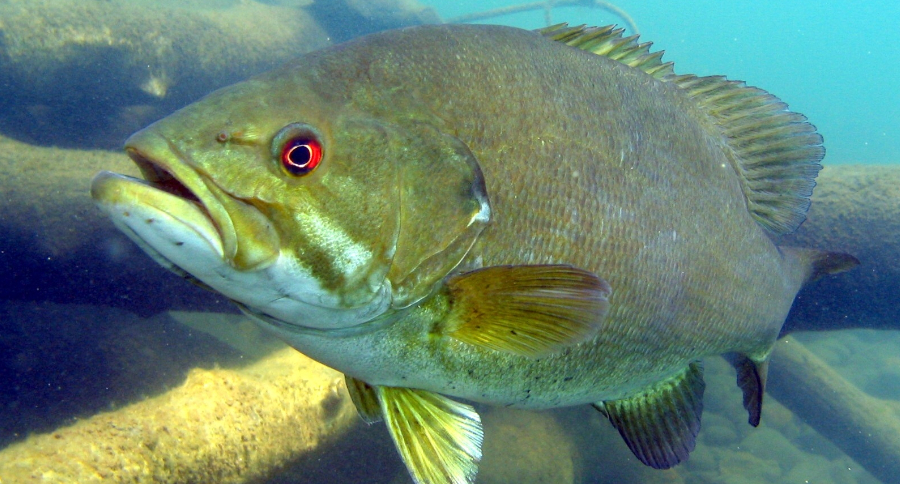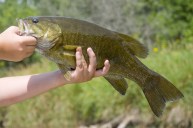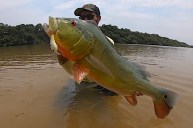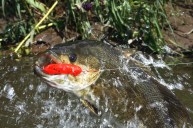This is everything you ever needed to know about smallmouth bass.
When it comes to iconic freshwater fishes, the smallmouth bass is a popular one with anglers across the United States and Canada. This sport fish species is known for its beautiful coloration and incredible fight once hooked on the end of a line.
Today we are doing a complete profile on this popular sportfish. We will cover everything from the range of common names to range and even the probability of someone breaking the world record. We may add a few angling tips along the way.
This is everything you need to know about the smallmouth bass.
What does a smallmouth bass look like?
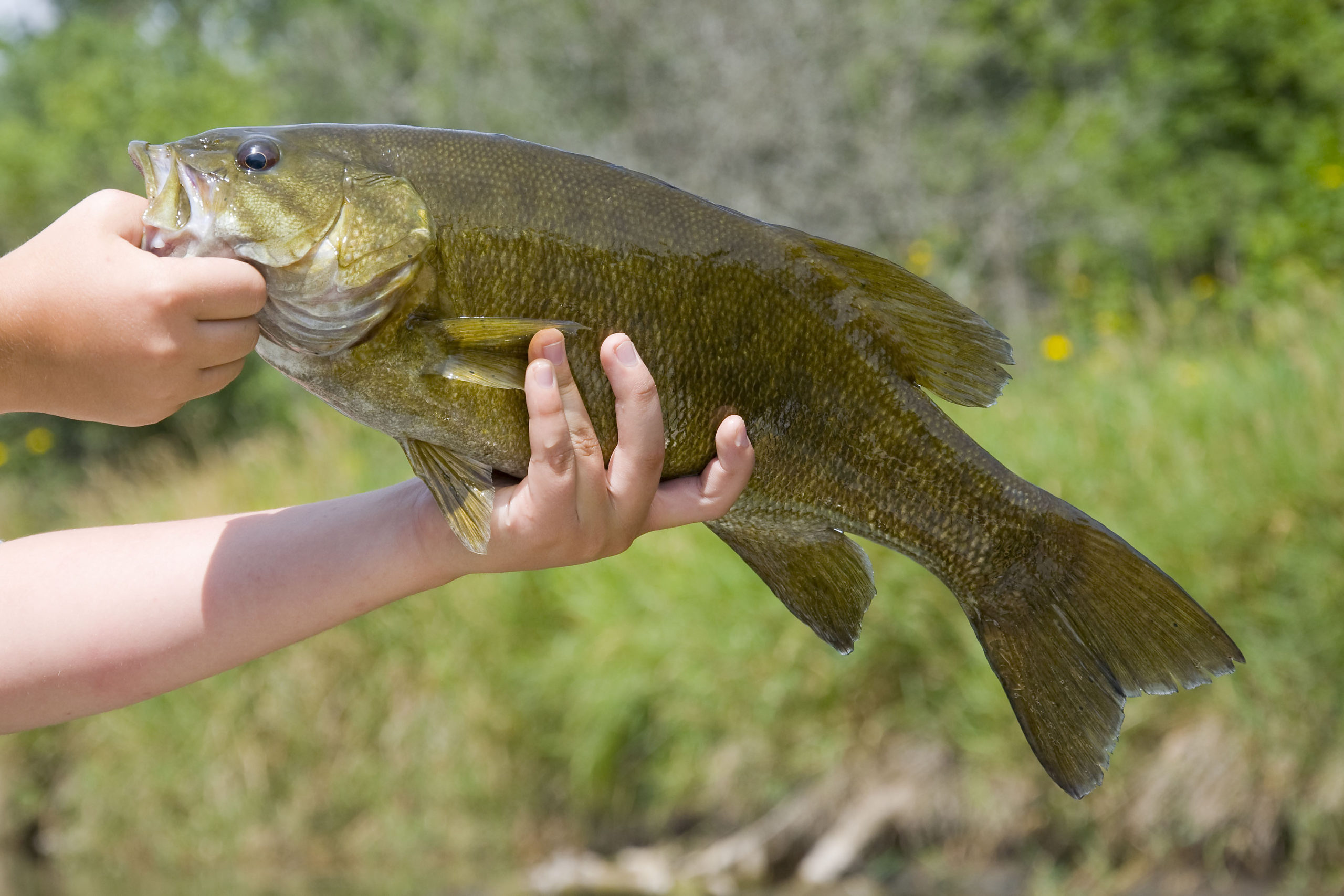
The smallmouth (Micropterus dolomieu), is generally considered one of the more beautiful black bass species alive today. A member of the greater sunfish family, smallmouths generally take on a brown or bronze coloration, thus their popular nickname "bronzebacks." The body of most smallies is marked with distinctive dark colored vertical bands or bars, especially if their habitat is in clear water. The visibility of these bands varies. Some darker specimens that live in murkier waters may not have visible bars at all. Newer anglers may have a difficult time differentiating this game fish from their equally-popular relative, the largemouth bass. One easy way to tell the difference is to look at the upper jaw. This part of the fish's mouth does not extend past its eye on smallmouths like it does on largemouths.
Another common tell-tale sign is the eyes. They often take on a reddish coloration. Smallmouths also tend to have more of a streamlined and athletic shape than largemouths, which often have noticeably larger heads and a chunkier body. The last distinguishing feature is the mouth itself. While largemouths have rightful earned the nickname "bucketmouth" for their gaping jaws, a smallmouth has a noticeably smaller mouth. In addition to the bronzeback nickname, these fish have earned some interesting regional names including brown bass and bronze bass depending on where they are found. Most anglers lovingly refer to them simply as "smallies."
What do smallmouth bass eat?
The largemouth has a voracious appetite consisting of almost anything they can fit in their mouth. The smallmouth has a similar appetite, although they tend to be slightly pickier about what they eat. Minnows and other small fish are regularly on the menu, but these bass prefer a good crawfish dinner over probably anything else. While those creatures make up the bulk of most smallmouth diets, they will not hesitate to snatch up an insect floundering in the current or a frog or lizard that wanders away from the safety of a riverbank either. However, most anglers tend to find success with lures that mimic either baitfish or crayfish.
What is the range and habitat of smallmouth bass?
If there is one downside to this species, it is that it is not nearly as widespread as its largemouth cousin here in North America. Historically, their native range was focused mostly in the Midwest around the Great Lakes region, but it also includes Hudson Bay and the St. Lawrence Seaway. Other native habitat includes portions of the Mississippi River and much of southern Canada. They are found readily in Michigan, Ohio, Indiana, Illinois, Wisconsin, Minnesota, Iowa, Kentucky, New York, Tennessee and Kentucky.
Unfortunately, the range of the smallmouth gets a bit spotty the further south you go. They have been successfully introduced to parts of Mississippi, Alabama, Georgia, Texas and the Carolinas, but most anglers in the southernmost part of the continental U.S. will never get the chance to tangle with one.
That spotty range continues westward all the way to California with only certain areas holding populations. Even though their introduced range is much smaller than their native range, many of these areas hold lakes are certified lunker factories. Places like Dworshak Reservoir in Idaho or Pickwick Lake and Wheeler Dam Tailwater in Alabama consistently produce giants year after year.
As for habitat, smallies are picky about where they live. While they are found in lakes, rivers and streams, they tend to prefer cooler water temperatures than largemouths. It is also much easier to find them hanging out in hard sandy bottom or rocky areas where the foods they prefer are plentifully found. Another key factor to keep in mind is water clarity. When fishing for smallmouths, fish the clearest water you can find.
How big do smallmouth bass get?
According to the U.S. Fish and Wildlife Service, the average smallmouth bass is usually between 12 to 16 inches. That would put most fish caught by anglers somewhere around one to two pounds. In most areas, a three to five-pound fish is considered a large smallie that any angler would be happy with. Smallmouths in the six to eight-pound range are caught every year but are uncommon. The officially recognized world record for a smallmouth is 11 pounds, 15 ounces. This colossal fish was caught by David Hayes on July 9, 1955 while trolling right on the border between Kentucky and Tennesee in Dale Hollow Lake.
This monstrous fish record is considered by many smallmouth bass fishing enthusiasts to be unbeatable. This is simply because nine-pound smallmouths are rare and only a handful of confirmed 10 pounders have ever been captured. At least one of those ten-pound fish also came Dale Hollow in 1986, making the place ground zero for anyone hoping to break the record. However, Hayes' 27-inch fish may have been a total genetic freak of nature. A once-in-a-thousand lifetimes fish. After all, it came in just one ounce shy of the 12-pound mark. The fact that no one else has even gotten remotely close to the magical 11-pound mark in the decades since seems to confirm that.
How to fish for smallmouth bass.

The most difficult part of fishing for smallmouths is often simply in locating them. Their picky habitat preferences mean you might have to do more searching than normal to locate where they are hiding out. For rivers, look for the clearest water you can find with rocky bottoms. Deep water bends may hold fish feeding on crayfish and minnows being swept downstream by the currents.
In lakes, again look for rocky bottom areas. While they will spend most of their time in the shallows during the summer months, they will eventually suspend in deeper water come the winter, making them prime targets for jigging, suspended jerkbaits and even live bait like minnows through the ice.
Three of my personal favorite lures for smallmouth fishing are jigs, crankbaits and spinnerbaits. In-line spinnerbaits can be especially effective in fast-moving rivers and streams. My dad's old standby is the Mepp's Comet, which resembles a small baitfish. For crankbaits, I like lures like the Rebel Craw, which has a photorealistic crayfish finish and an erratic, but tight wobble. Even the smaller sizes of this lure create a lot of vibration that stimulates the smallie's lateral line and makes it hard for them to turn away. Finally, do not forget about topwater lures like Jitterbugs and Zara puppy stickbaits when conditions are ripe. You truly have not experienced an exciting topwater bite until you have had an aggressive smallie blow up your popper or buzzbait.
Our final fishing tip for smallmouth bass is to simply be patient. These bass can be a little more challenging to catch than the other subspecies out there, due to their picky feeding habitats and scattered range. However, pound for pound, they arguably put up the best fight of any bass species out there. That alone makes them a species worth pursuing!
For more outdoor content from Travis Smola, be sure to follow him on Twitter and check out his Geocaching and Outdoors with Travis YouTube channels.
NEXT: THE AXIS DEER AND HOW THEY'RE IMPACTING PARTS OF THE UNITED STATES
WATCH
